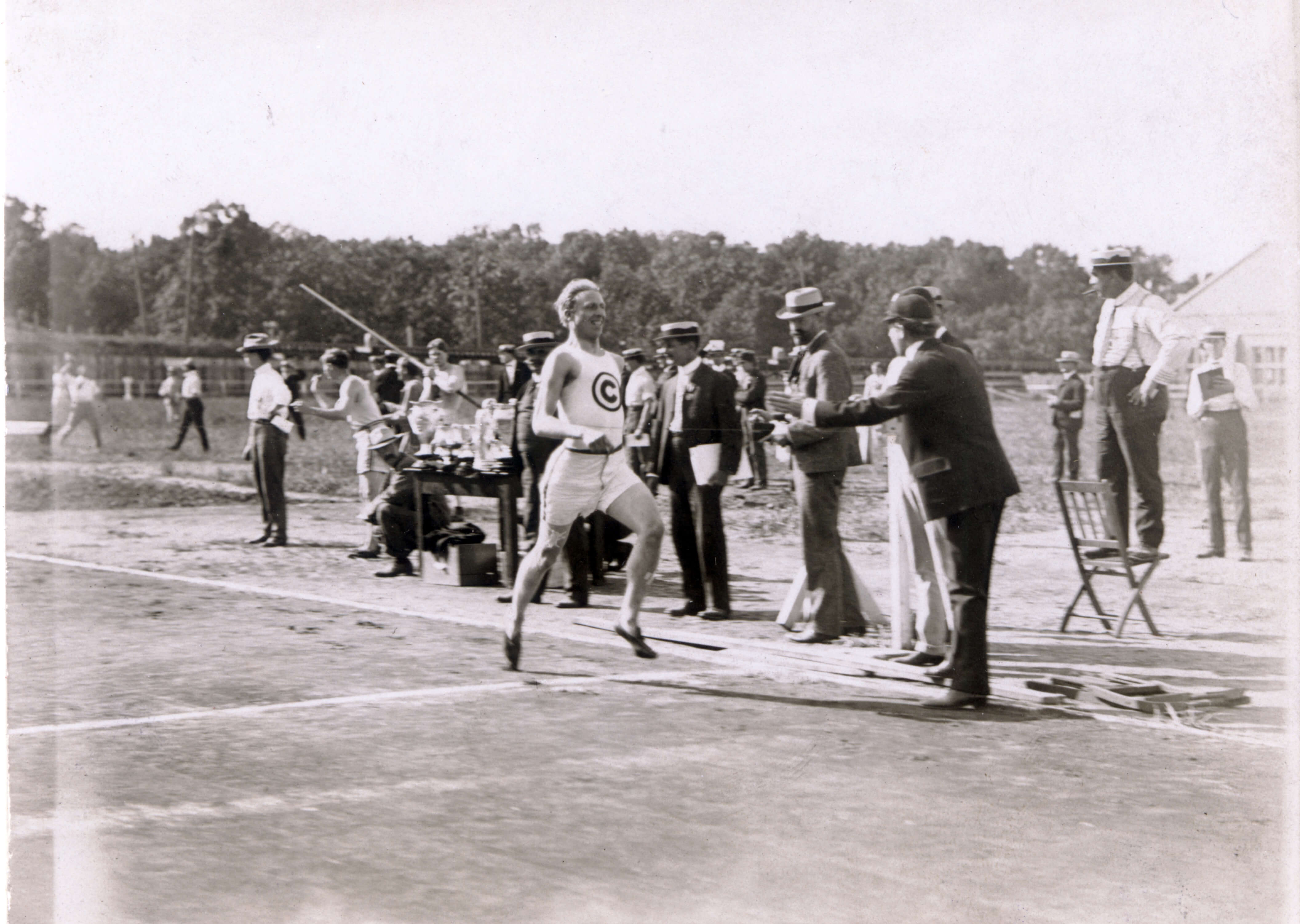Is Low-Mileage Training Right for You?

Most of us try to do more with less—whether getting more for our money, doing more things in less time or feeling more fulfilled with less material stuff. But did you ever think that could apply to your training as a runner? Maybe you think that competing in a half marathon or marathon requires slogging through many weeks of high mileage. That may not necessarily be the case. Read on to see if low-mileage training might be right for you.
A Brief History of Training Methods
On his website, The Science of Running, elite coach Steve Magness, asserts that training methods are cyclical, maybe because of a need to continually reinvent the process. He believes that there has always been a battle between volume and intensity, as evidenced in popular training methods of the past 100 years or so.
For instance, during the early part of the 20th century, the training focus continued that of the late 19th century with a lot of walking for long periods. Paavo Nurmi (the “Flying Finn”) and his teammates maintained the long walk method but also added interval training of 100 to 200 meters.

During the 1940s and ’50s, high-volume interval training was common, like the numerous 400-meter repeats that were the hallmark of Emil Zapotek’s training or the 80 x 200 meters prescribed by physiologist Woldemar Gerschler. There was a bit of a schism in athletes at this time with the likes of Roger Bannister opting for lower-volume interval training. We all know how that worked out.
Training in the 1960s and ’70s focused on high mileage, a proponent of whom was Arthur Lydiard, who also popularized the blending of endurance training with high-intensity work. He believed that athletes needed to develop a base of aerobic running before adding intervals to their training.
The pendulum swung back to intervals in the 1980s and ’90s and these decades also saw burgeoning research into the science of running and its training and racing methods. The 2000s saw a slight shift back to endurance training, which, according to Magness, has caused a revival in American distance running, substantiated by new records in the mile, 5K, 10K and half marathon.
So, now is it time for the pendulum to swing back again?
What Qualifies as Low-Mileage Training?
Although you would probably get a different answer from everyone you asked, low mileage is probably in the 20 to 30 miles per week range. If we consider that elite athletes are running somewhere between 100 and 140 miles per week, high mileage might be 50+, and medium between 40 to 50 miles.
There are many staunch supporters of high mileage, especially among marathoners and ultra-marathoners, but for those who run half marathons or shorter, logging in a lot of miles may not be necessary.
The Science of Low-Mileage Training?
There is a good bit of anecdotal evidence that, in some cases, less weekly mileage can result in faster times but there aren’t many scientific studies to back that up.
David Costill, a well-known physiologist and the author of Inside Running: Basics of Sports Physiology, concluded that training distances of about 50 miles per week correlated with an improvement in VO2 max, the measurement of the most oxygen an athlete can use during intense exercise.

But what happens at distances above 50 miles per week and even those in the 100+ miles per week range? The thinking here is that your VO2 max capacity continues to climb to your genetic potential and then stops.
A study conducted at Furman University, home of FIRST (the Furman Institute of Running Scientific Training), followed 25 runners of various ages and abilities during 16 weeks. Following the FIRST training plan, which includes three running workouts and cross-training, 21 of them entered a marathon with all of them finishing. Fifteen participants ran to PRs and four of the remaining six runners posted faster times than their previous marathons. In a follow-up study in 2005, 12 of 14 participants ran PRs after completing the FIRST program.
Would You Benefit from Low-Mileage Training?
Those elite athletes who are running 100+ miles a week are professionals and running is their job. Most of us don’t have hours a day to dedicate to training. For the time-crunched 9-to-5er with a busy family life, low-mileage training might offer the opportunity to achieve a goal—to complete a marathon, say—that they didn’t think was possible simply because they didn’t have the time.
Some runners find that an increase in mileage also comes with an increase in the potential for injury. A low-mileage training program may let the injury-prone continue to do what they love while avoiding a vicious cycle of injury-rehab-running-injury, etc.

Those who are just returning to running from an injury may find that a low-mileage program enables them to ease back into the sport gradually and helps them resist the urge to do too much too soon.
What Does a Low-Mileage Training Program Look Like?
Just because the training program is considered low-mileage, it doesn’t mean it won’t be challenging.
For example, Furman’s FIRST marathon plan includes three runs per week—a long run, an interval run and a tempo run. The FIRST plan also includes a cross-training component, such as cycling, that its creators consider critical to the program.

In “Time efficient running—run less to run faster?” author Andrew Hamilton offers the following sample week of a 10K training program with mileage total of 24 to 26 miles.
- Tuesday: 10-minute warm-up, 10 x 45 seconds of fast, uphill running, 10-minute cool-down
- Thursday: 6-mile run that includes 3 x 8 minutes fast (10K pace) with a 2-minute recovery jog in between
- Saturday: 10-minute warm-up, 2 x 15 minutes at threshold pace with 2-minute recovery in between
- Sunday: 8- to 10-mile run at an increasingly faster pace per mile
For Aaron Olson, the author of Low Mileage Running: A Short Guide to Running Faster, Injury Free, his plan was not to follow a plan but to run whatever he felt like running. On the introductory page of his website, lowmileagerunning.com, he explains, “I allowed myself to run very hard key workouts only 1–2 days a week; everything else was easy running. After each key workout, I’d take several days easy or not run at all. I was having fun, I was injury free, and surprisingly, I was getting faster.” He offers more detailed training guidelines and strategies in his book.
You can find programs for low-mileage training programs online, in books or running magazines. Or maybe, like Olson, you just cut back on the mileage and see what happens.
Sources
- , The FIRST marathon training plan, web site
- , Time efficient running--run less to run faster?, web site
- , Introduction to Low Mileage Running, web site
- , The Evolution and History of Training: The Volume versus Intensity Cycle, web site
Latest Articles
 Is Running on a Treadmill Easier Than Running Outside?Runners have their own preferences, whether it is treadmill running, running outside on the road, or exploring trails. So...
Is Running on a Treadmill Easier Than Running Outside?Runners have their own preferences, whether it is treadmill running, running outside on the road, or exploring trails. So... Is It OK to Use Trail Running Shoes on the Road?While trail running shoes can be used on roads, especially in situations where a runner encounters mixed terrains or pref...
Is It OK to Use Trail Running Shoes on the Road?While trail running shoes can be used on roads, especially in situations where a runner encounters mixed terrains or pref... How to Fix Sore Quads After Running?Rest, ice, gentle stretching, and over-the-counter pain relievers can help soothe sore quads after running. Also, ensure ...
How to Fix Sore Quads After Running?Rest, ice, gentle stretching, and over-the-counter pain relievers can help soothe sore quads after running. Also, ensure ... 10 Fruits With The Most Electrolytes to Replace Sports DrinksThese fruits are high in electrolytes such as potassium, magnesium, and calcium, essential for hydration, muscle function...
10 Fruits With The Most Electrolytes to Replace Sports DrinksThese fruits are high in electrolytes such as potassium, magnesium, and calcium, essential for hydration, muscle function...

